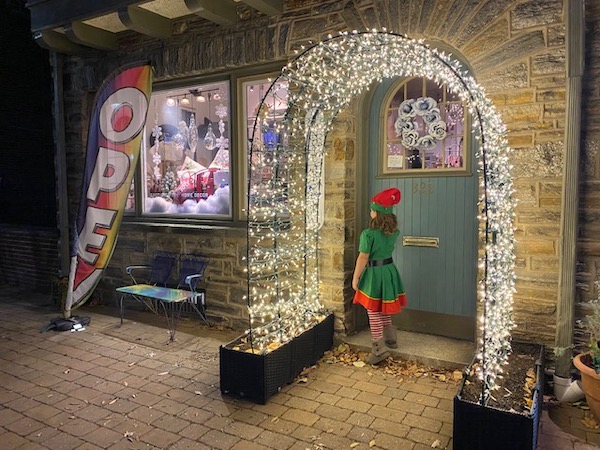
Small Business Saturday in Conshy
November 25, 2022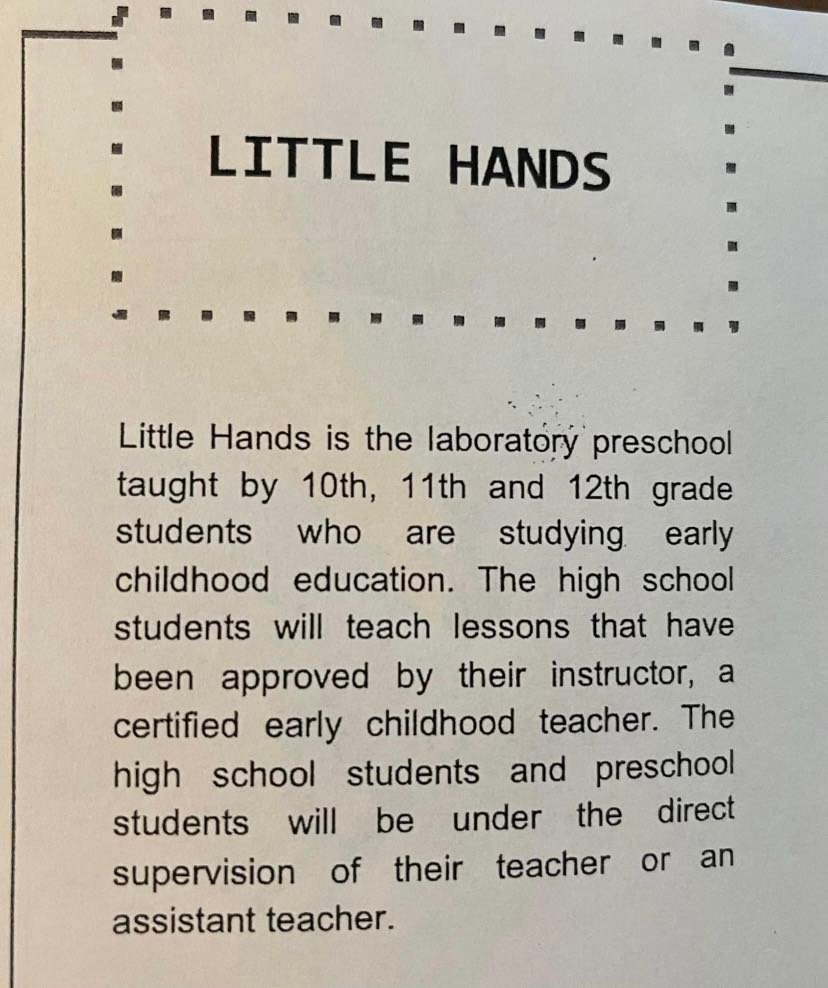
Childcare Program at Central Montco Tech School and more
December 2, 2022History of a House – And a Park?
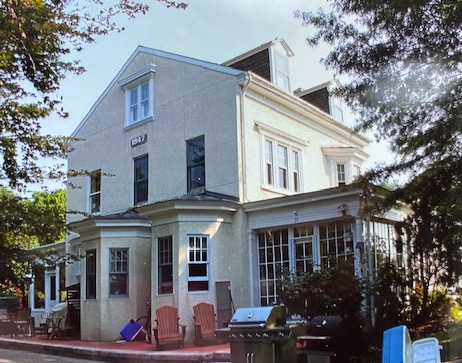
History of a House
440 East North Lane
Frank Sutcliffe
Have You Ever Heard of Mary Jane Sutcliffe Park?
Read On!
By Jack Coll
11-22-22 (published 12-1-2022)

There’s a beautiful old house located at 440 East North Lane set back off the street partially hidden by trees and shrubbery and has been around since 1847. The house known as “Artella” is located in Whitemarsh Township, founded in 1704, the house has been renovated and currently has several well-maintained apartments in it.
“Artella” has a long and rich history with a number of prominent residents who have called 440 North Lane home over the years, but perhaps none as well known as Frank and Mary Jane Sutcliffe.
Residents of Conshohocken have enjoyed many, many events held at Mary Jane Sutcliffe Park over the years including the Annual July 3rd fireworks, picnics, wonderful play areas for our children, little league baseball, flag football and a whole lot more since 1929.

Mary Jane Sutcliffe Park consist of approximately 40 acres, thirty-seven and a half of those acres were donated by Frank Sutcliffe and the company that he owned the Conshohocken Reality Corporation.
So, who is, or who was Frank Sutcliffe? Let’s start at the beginning. Mr. Sutcliffe was born in Rochelle, England in 1881, he married Mary Jane Howarth who was also born in Rochelle England in 1882. The couple married on August 15, 1903 while the couple were still citizens and living in England.
The couple emigrated to the United States on May 9, 1906 and landed in Boston Mass., where Sutcliffe landed a job in his trade as a patternmaker making $11.60 cents a week for 58 hours of work. After less than a year the Sutcliffe’s moved to Pennsylvania and made their home in Reading. In 1907 they moved again to Norristown and then Conshohocken, (Whitemarsh) in 1909.
In 1907, he opened a modest pattern shop in Norristown and grew the business to where he had 63 employees before selling the business in 1909 and went to work with the John Wood Manufacturing Company in Conshohocken. Once he joined the Wood Company his career really took-off.

Sutcliffe became an American Citizen in 1911 and by 1914 was running the company’s Pattern shop. During the next five years Sutcliffe showed strong leadership and gained recognition for his astute handling of labor problems. Mr. Sutcliffe understood the working -class man as he had been throughout the early portion of his life and had a way sorting out labor problems in favor of both the company and the workers.
In 1919 Sutcliffe rose to the office of president of the company, he served in that capacity from 1919 until he retired in 1933 when he fell to ill health. Several years before retirement he accomplished a feat possible to but few men. Sutcliffe held simultaneously the presidency of six different companies in the United States and Canada, among them the John Wood Manufacturing Company, one of the world’s largest manufactures of electric weld products. In addition, he served for many years prior to retirement as a director of the First National Bank of Conshohocken, the bank later became Philadelphia National Bank, and a director of the Matsonford Building and Loan Association.
Throughout the late 1920’s as president of the Conshohocken Realty Corporation he directed the erection of a more than a million dollars’ worth of moderate-priced homes contributing extensively to the residential development of the upper avenues on both sides of the borough that included the construction of more than 200 houses.
When the Conshohocken Council No. 1603 Knights of Columbus were looking for funds to construct their headquarters at East Second Avenue and Fayette Street on the site of the old Bob Crawford Cigar Store in 1926, Sutcliffe was one of the first contributors to help fund the construction. The Knights of Columbus held groundbreaking ceremonies in July 1926 and dedicated the new headquarters in the fall of 1926. The building that is now part of the Great American Pub located on the corner was constructed by Phil Coyne Construction, father of former councilman Phil Coyne.
A few years later when the members of the John F. DeHaven Post, American Legion were seeking funds to build their Post Home at the corner of West Second Avenue and Forrest Street back in 1928, Sutcliffe again was one of the first to step forward to fund the construction. (The building was completed in 1929 and still stands today on the corner)
Mr. Sutcliffe contributed to dozens of charities throughout the 1920’s and one of his biggest contributions was his commitment to aiding the growth of the Conshohocken Community Center which back in the 1920’s was centered around the Mary Wood Parkhouse, and back then the Community Center, founded in 1914 provided much of the borough’s recreation and activities.
Understanding the need for recreation, not to mention employee bonding Sutcliffe, along with Victor Mauch who was the Chairman of the Board at the Wood Company decided to create a social outing that would involve chartering private trains to take the Wood employees and their families to and from Atlantic City. So, in 1922, it was announced that any employee wanting to go to Atlantic city would have to pay one dollar per family member to board the round-trip train ride to Atlantic City and back.
Special arrangements were made ahead of time negotiating with the Atlantic City Mayor and Chamber of Commerce to have food vendors on the boardwalk offering special rates to all Conshohocken visitors, a “Welcome Conshohocken” banner hung at the AC Train Station where the Conshy visitors deboarded, with a full compliment of police officers just to take care of the visitors in case of emergency, lost kids, accidents and so-on.
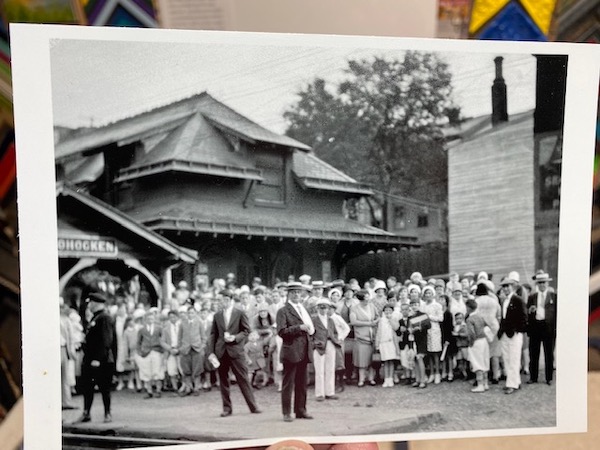
These Atlantic City excursions lasted from, according to my files from 1922-1950. Once on the train and traveling Mr. Mauch and Mr. Sutcliffe, who traveled with the employees for most of the years, would provide treats and surprises on the train along the way. It was reported on a number of occasions that there was a baggage car in the middle of the train that held ice cream, cakes and other novelties which were passed out to everyone on the train. Mr. Sutcliffe would often be seen boarding the train holding onto what looked like an old-time doctor’s bag, only there was no medicine in that bag as it was full of one-dollar bills to which he would hand out to every child on the train so they would have a little extra spending money for the boardwalk.
Once on the Boardwalk employees wearing special white lapel badges with the inscription of “John Wood Atlantic City Excursion” proudly worn by the more than 1,000 employees of the company attending. The amusements rides were free for the employees on the Steel Pier, Million Dollar Pier, and Steeplechase Pier among others, children and guests of the Wood employees also wore similar purple badges that entitled them to half-price tickets.
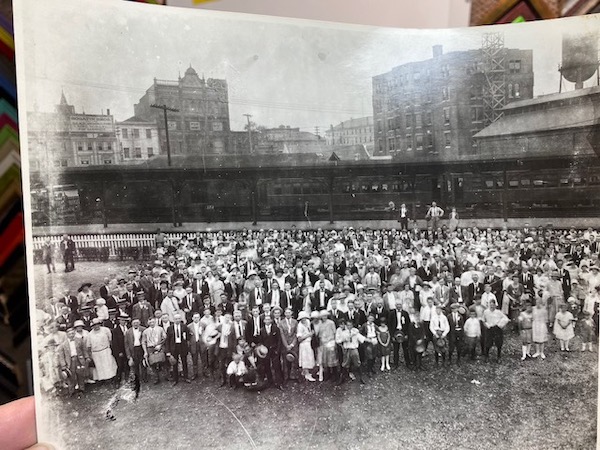
It was reported that on a number of excursions that things didn’t go exactly as planned, let’s see, there was the time in 1927 when, as the train was speeding over the Jersey fields on its way to Atlantic City when suddenly the train came to a screeching halt. Well, after inquiry the explanation came that one of the young women passengers had dropped her pocket book from the cars open window. (One must remember that the large open windows on the old Pullman passenger’s cars allowed passengers to hang out the window, stick arms and legs out the windows, and they seemingly allowed females to hang their purses out the window.) Train officials were notified and managed to stop the train approximately a half mile from where she dropped the purse. Once the train was halted several young men hurried to the road, ran back and found the purse. The Conshohocken Recorder newspaper article noted that this was one of several incidents that marked the day.
During the 1931 excursion there was only one incident reported fourteen-year-old Stella Zuaraska of West Fifth Avenue while sliding on one of the amusements at the Steeplechase Pier sprained her right ankle. She was rushed to the first aid station in a taxicab by pier officials and a wheel chair was provided by the railroad authorities to convey her into the excursion train. On a side note, that same year, (1931) two hundred members of the excursion had dinner at the Devonshire Hotel used that year for the first time as excursion headquarters. Special menus handed out were “Headed,” “Welcome to the John Wood Manufacturing Company employees on their annual excursion.”
Then there was the time when two young excursionists went missing when a head count was taken on the way home 10:30 at night. Joseph Freas and Joseph Cavanaugh, then ages 14 and 16 were no-where to be found on the train. An hour and a half later as the train pulled into the North Philadelphia station railroad officials were notified about the two missing teens. A quick telephone call to Atlantic City determined that the two had been boarded at the Y.M.C.A for the night by the railroad. A Wood employees Committee Member Edward Gallagher was elected to take the Sunday morning train back in Atlantic city to get the two and return them to Conshohocken.
For a number of years, the final treat came on the ride home when everyone on the train would receive a box of James Salt Water Taffy. Frank Sutcliffe was partially responsible for these excursions, providing recreation for the borough residents was always a priority for him.
There were many, many excursion stories to tell, but perhaps that’s for another article, at another time.
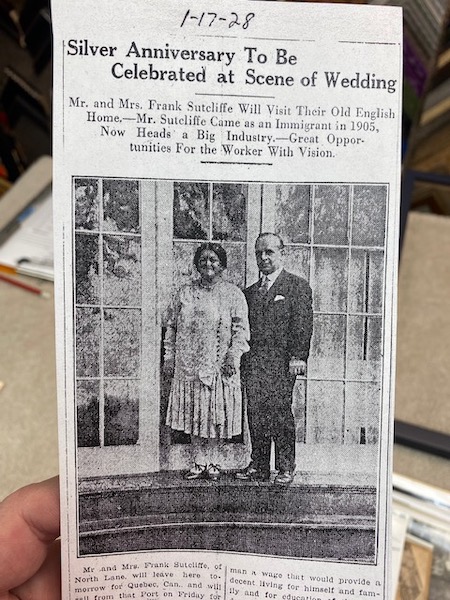
Perhaps Sutcliffe’s lasting donation to the borough was his donation of ground on the west side of the borough at the bottom of West Ninth Avenue. Sutcliffe’s Reality firm owned the property below West Ninth Avenue and after building more than 200 houses mostly in the Fourth and Fifth Wards, he decided that a park/playground would not only enhance the community but provide a well needed recreation area.
So, in the early spring of 1929, the Conshohocken Reality Firm, owned by Sutcliffe, donated about 25 acres of ground at the bottom of West Ninth Avenue, down to what would become Sutcliffe Lane for use as a park/playground. Just a few months later in November another ten and three-quarters acres owned privately by Sutcliffe was donated as an add-on making the overall donation about thirty seventy and a half acres in total. In years to follow the borough has added a couple of acres making the size of the overall park more than 40 acres.
An article printed in the Conshohocken Recorder on April 12, 1929, takes us back to what the park was and what the park looked like nearly one hundred years ago. It wasn’t the beautiful sprawling green ballfields and playground we see today when we drive by it, no, it was what looked like a huge thick brush forest running through a valley in the lower part of the borough.
The headline read:
“New Playgrounds Have Great Natural Beauty”
And the sub-headline read:
“Will Be Ideal Spot for Children—Land Lends Itself for Development”
The beginning of the article read:
“The beautiful new playground area given by the Conshohocken Reality Corporation for the health and pleasure of the borough’s children is too little known to the townspeople for the treasure that it is. The word “Playground” hardly suggests the charm of this long green meadow, where sycamore trees and a giant Elm grow beside the brook that flows from Hallowell’s Spring and the bare trunk and boughs of a fallen sycamore sprawls across the stream and offers one of the most fascinating places to climb upon and over and under, that children ever saw.
It is remarkable the way the town has developed on three sides of this beautiful tract of land leaving its natural charm unspoiled except for the debris that will always accumulate on any unguarded land lying near a town, and which can be easily removed. With the brook cleared of obstructions and the splendid turf cared for it will be one of the prettiest places in the world. No wonder Bill Weir of the Playground and Recreation Association of America who visited it was enthusiastic about it last fall.”
The Mary Jane Sutcliffe Park was officially dedicated on July 4, 1930. On that Independence Day a cool breeze was blowing across the meadow as three thousand friends and residents joined in the dedication ceremonies.
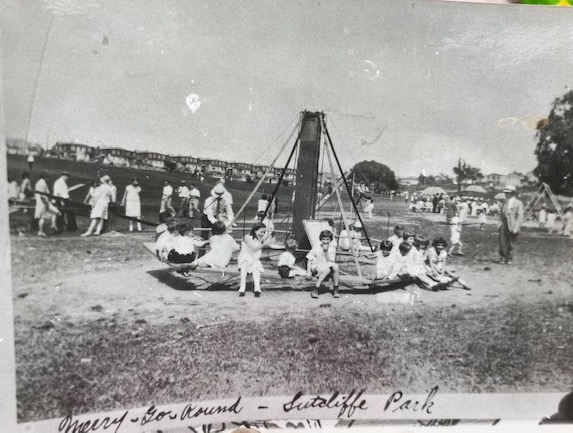
The park was formally opened at 9 a.m. with a flag raising. The flag was raised by Katharine Kay and Jack Foley, children selected from the playgrounds. Katharine was the granddaughter of William Heald, the borough’s Chief of Police at the time. Dedication ceremonies were held in the afternoon, a large wooden stand was built at the base of the hill and the audience stood silent while nearly a one-hour ceremony that involved a number of speakers including Frank and Mary Jane Sutcliffe spoke. Ovations greeted the Sutcliffe’s as they were introduced as Frank, the donor of the park and to Mrs. Sutcliffe as having the honor of having the park bear her name. Mr. Sutcliffe was applauded when he stated he would give as much for the next five years as the borough would appropriate towards the maintenance and development of the park.
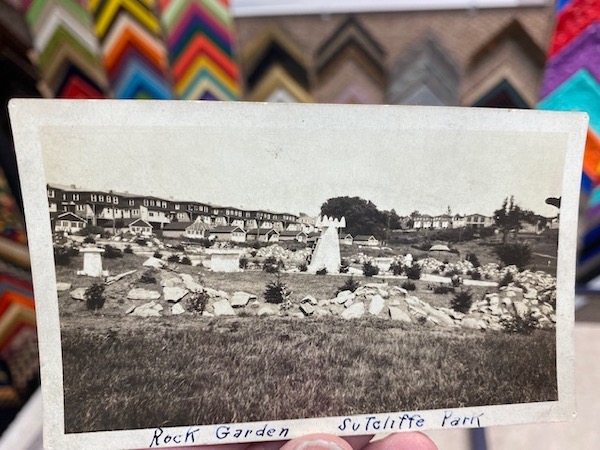
Further developments were made as the years passed, one of the first programs at the new park in July of 1930 was Swimming lessons, would be taught at the park. It was the first time in the borough that swimming lessons had been offered. The lessons took place at the wading pool at the playground by instructor Raymond Lentz.
In 1934 work began on clearing a plot of ground to be leveled for the baseball field. Work was halted in June because of the lack of funds. Work wouldn’t resume until more than a year later in October of 1935, when a PWA project came up with the money to put 243 Conshohocken residents to work on the ballfield and other parts of the park.
In the spring of 1943 Borough Council authorized a large section of Sutcliffe Park land be used for a “Victory Garden.” These Victory Gardens popped up throughout the nation for the purpose of supporting our troops at war and growing vegetables. More than 1,400,000 Victory Gardens were planted in Pennsylvania alone. The Advisory Victory Garden Committee of the State Council of Defense typically would control these gardens preparing plot diagrams for each community’s garden. Conshohocken had room for forty gardens, and in 1946 expanded adding another 70 plots in the space at Sutcliffe Park.
In the winter of 1949, the Conshohocken Chamber of Commerce led by Samuel DeMedio applied to the Borough Council to sponsor Ice-Skating for residents at Sutcliffe Park, Council approved the motion once all the insurance documents were in order, and so began ice skating at Sutcliffe Park. (To the best of my knowledge ice skating on the lighted basketball courts lasted until the mid 1960’s.
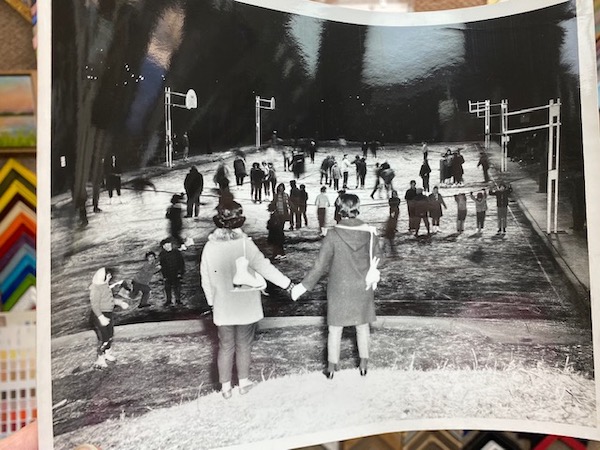
1959 saw many major improvements at Sutcliffe Park with the addition of the Little League Baseball Field. For the little league’s first four years the little league games were played behind the Conshohocken Bocce Club located on West Third Avenue. In 1959, behind the efforts of Big John Casinelli, President of the league in 1959 and Ray and Phil Gravinese along with Jimmy Verrone, Ange D’Amico, Bob Wesley, Joe Dennis and a few others, these were the guys who got their hands dirty constructing the new field.
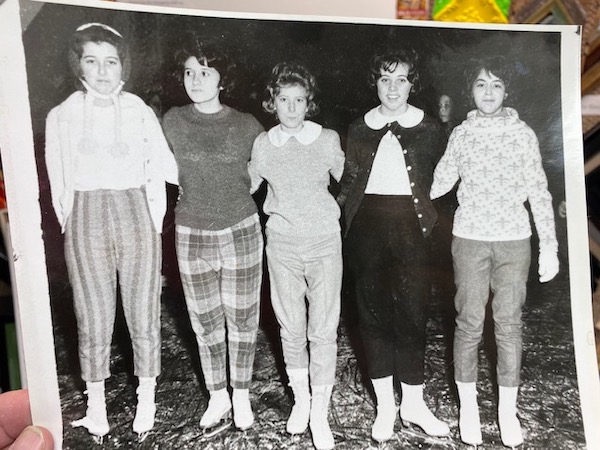
Also, in 1959 a newly formed organization known as “SPIFFY,” or (the Sutcliffe Park Improvement Fund For Youth) organized to further help develop parts of the park including installing rest rooms. (which they did) along with other facilities at the park.
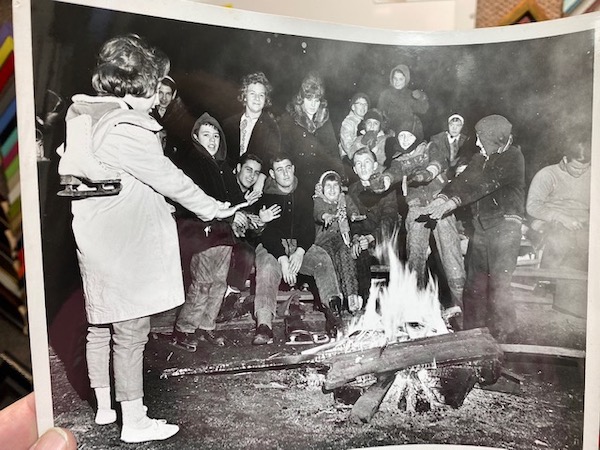
In 1980 a second ballfield was added by the borough known as the “Minor League Field,” A few years later a new concession stand and announcers booth was added at both fields with contributions by the Conshohocken AMBUCS. Since then, two more ballfields have been added. In recent years the park has seen an up-tick in the park’s programs with Flag Football and other group activities taking place. Just a few years ago a wonderful playground up-grade was installed encouraging even more youngsters to utilize the wonderful park we call Mary Jane Sutcliffe Park, just Sutcliffe Park to most of the residents.
Mary Jane Sutcliffe was an active philanthropist who passed away on October 4, 1947, at the age of 66, she had been ill for about a year.
Frank Sutcliffe retired at the age of 33 years old and not many people knew that he was extremely ill at the time. In 1949, just two years after his wife Mary Jane passed away Sutcliffe moved to a home on Rising Sun Avenue moving in with a friend John R. Oels. After more than 20 years his illness caught up with him and he fell seriously ill and passed away at the age of 74 on June 14, 1955.
Frank Sutcliffe, a man whom I’m sure not many residents knew who he was or even knowing that he was the donor of Sutcliffe Park stood for many things throughout his lifetime. He was an extremely important man in his many business adventures but never too important to stop and lend a hand to the working man. He knew what it was to be a working man and worked to support the working man and his family. His contributions to this community were extremely important especially when it came to, the recreation events and facilities of Conshohocken.
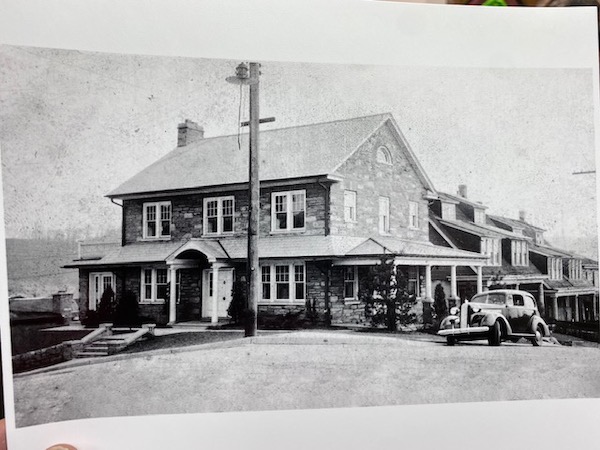
Frank and Mary Jane had no children, and yet he helped finance a building for the Knights of Columbus who turned their headquarters into a recreation center, he donated property to be used as a park and playground forever along with a five-year financial commitment for funding the development of the park, and here we are still talking about Frank Sutcliffe nearly one hundred years after he donated the property that we know as Sutcliffe Park.
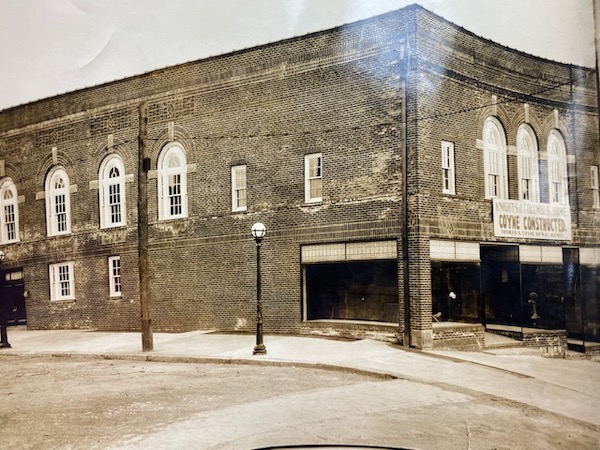
As you enter the park from Wood street, there’s a big sign “Sutcliffe Park.” (No mention of Mary Jane) Perhaps one day our Borough Council would see-fit to place a bronze marker at the entrance of Sutcliffe’s park explaining what an overall contribution this man made to a borough that he never really lived in, and perhaps we should add Mary Jane’s name to the park.
And while we’re at it, a bronze plaque would also be in order for the Mary Wood Park as well, her contribution to Conshohocken has made the borough very desirable place to live, play, work and worship. We should all be thankful for the residents who helped shape the borough of Conshohocken.
Photographs above include:
The house at 440 North Lane where Frank and Mary Jane Sutcliffe lived.
The Welcome to Sutcliffe Park sign bearing Sutcliffe’s name but not his wife’s Mary Jane’s name
An exterior photo of the John Wood Manufacturing Company circa 1930 when Sutcliffe served as the company president
Two group photographs of Conshohocken residents participating in one of the John Wood Atlantic City Excursions, one photo was taken at the Conshohocken Train Station and one photograph of residents as they deboarded the train in Atlantic City.
A newspaper photograph of Frank and Mary Jane Sutcliffe, celebrating their 25th Wedding Anniversary in January 1928. (It’s the only picture I have of Mary Jane.)
Two 1940’s photographs, one showing the Rock Garden and the other a picture of the first merry-go-round installed at the park. The picture of the merry-go-round brings to mind a story that appeared in the Conshohocken Recorder newspaper in June of 1930. The article reported the first accident at Sutcliffe Park that occurred when Gerald Jacquot, a seven-year-old West Tenth Avenue resident. Gerald was struck by the merry-go-round after he had jumped off the amusement device and had his right leg broken below the knee. Ironically the merry-go-round had just finished being installed less than an hour before young Jacquot hopped on.
A couple of photographs of Sutcliffe Park with the young resident’s ice skating on the basketball courts in the early 1960’s. One photo shows two friends holding hands looking down on the rink.
One photograph shows a number of skaters huddled around the fire, and one photograph showing a group of skaters that included from left Kathy McGrath, Marie Bono, Pat DiGregario, Leona Burt and Kathy Januzelli
A couple of Sutcliffe Park Photographs from the early 1960’s.
A 1940’s photograph of the John F. DeHaven Post at Second Avenue and Forrest Street. Frank Sutcliffe was a major donor for the construction of the building back in 1929, just one of many donations Sutcliffe had made over the years for the betterment of the town
A 1926 photograph of the Knights of Columbus building located at Second Avenue and Fayette Street. The building was near completion as you can see the Coyne Construction sign still on the front of the building. For many years the building housed a bowling alley, first in the basement and in later years on the second floor. There was a roller-skating rink enjoyed by thousands of area residents along with other activities. The building was later known as the popular Warrell’s Store. Warrell’s was like a home town “Sears” store selling auto parts, appliances, televisions, bicycles, fans and other household supplies. Today the building is part of the very popular “Great American Pub.”
Conshystuff has published more than 40 episodes of “History of a House,” feel free to go to Conshystuff.com and enjoy past articles written by Jack and Brian Coll.
We would like to take a moment to thank our sponsors, should you be in need of a service or a restaurant recommendation our sponsors would appreciate your support.
See you on the next edition of “History of a House.”

